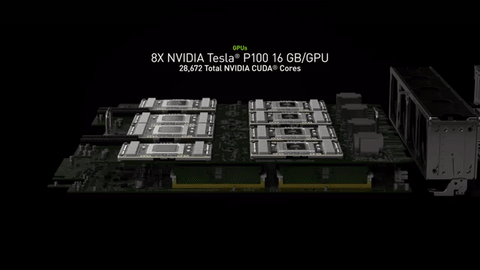
Are you scared of Artificial Intelligence (AI)?
Do you believe the warnings from folks like Prof. Stephen Hawking, Elon Musk and others?
Is Artificial Intelligence the greatest tool humanity will ever create, or are we “summoning the demon”?
To quote the head of AI at Singularity University, Neil Jacobstein, “It’s not artificial intelligence I’m worried about, it’s human stupidity.”
In a recent Abundance 360 webinar, I interviewed Bryan Johnson, the founder of a new company called Kernel which he seeded with $100 million.
To quote Bryan, “It’s not about AI vs. humans. Rather, it's about creating HI, or ‘Human Intelligence’: the merger of humans and AI technology.”
Let’s dive in.
P.S. Send any tips to our team by clicking here, and send your friends and family to this link to subscribe to Abundance Insider.
Meet Bryan Johnson and His New Company Kernel
Bryan Johnson is an amazing entrepreneur.
In 2007, he founded Braintree, an online and mobile payments provider. In 2013, PayPal acquired Braintree for $800 million.
In 2014, Bryan launched the OS Fund with $100 million of his personal capital to support inventors and scientists who aim to benefit humanity by rewriting the operating systems of life.
His investments include endeavors to cure age-related diseases and radically extend healthy human life to 100+ (Human Longevity Inc.), make biology a predictable programming language (Gingko Bioworks and Synthetic Genomics), replicate the human visual cortex using artificial intelligence (Vicarious), expand humanity’s access to resources (Planetary Resources Inc.), reinvent transportation using autonomous vehicles (Matternet), and reimagine food using biology (Hampton Creek).
Bryan is a big thinker, and now he is devoting his time, energy and resources to building “HI” through Kernel.
The company is building on 15 years of academic research at USC, funded by the NIH, DARPA and others, and they’ve begun experiments in humans.
But what is Human Intelligence? And neuroprosthetics? And how is Artificial Intelligence related?
Keep reading.
BCI, Neural Lace and Human Intelligence
Your brain is composed of 100 billion cells called neurons, making 100 trillion synaptic connections.
These cells and their connections make you who you are and control everything you do, think and feel.
In combination with your sensory organs (i.e. eyes, ears), these systems shape how you perceive the world.
And sometimes, they can fail.
That's where neuroprosthetics come into the picture.
The term "neuroprosthetics" describes the use of electronic devices to replace the function of impaired nervous systems or sensory organs.
They've been around for a while -- the first cochlear implant was implanted in 1957 to help deaf individuals hear -- and since then, over 350,000 have been implanted around the world, restoring hearing and dramatically improving quality of life for those individuals.
But such a cochlear implant only hints at a very exciting field that researchers call the brain-computer interface, or BCI: the direct communication pathway between the brain (the central nervous system, or CNS) and an external computing device.
The vision for BCI involves interfacing the digital world with the CNS for the purpose of augmenting or repairing human cognition.
You might have heard people like Elon Musk and others talking about a “neural lace” (this was actually a concept coined by science fiction writer Iain M. Banks).
Banks described a “neural lace” as essentially a very fine mesh that grows inside your brain and acts as a wireless brain-computer interface, releasing certain chemicals on command.
Well… though the idea might have started as science fiction, companies like Kernel are making it very real.
And once they do, we’ll have robust brain-computer interfaces, and we’ll be able to fix and augment ourselves. Ultimately this will also allow us to merge with AIs and become something more than just human.
Human Intelligence (HI)
Humans have always built tools of intelligence.
We started with rocks and progressively built more intelligent tools such as thermostats, calculators, computers and now Artificial Intelligence. These are extensions of ourselves, and so we've been increasing our intelligence through our tools.
But now, our tools have become sophisticated enough (thanks to exponential technologies riding atop Moore’s Law) that we are about to incorporate them into our biology and take an exponential leap forward in intelligence.
This is so significant that it will change us as a species – we’re taking evolution into our own hands.
I like to say we're going from evolution by natural selection -- Darwinism -- into evolution by intelligent direction.
We can now focus on technologies to augment human intelligence (HI).
This is what Bryan Johnson and Kernel are focused on.
The first step is to answer the basic question: can we mimic the natural function of neurons firing?
If we can mimic that natural functioning, and restore circuitry, or even if we can just maintain that circuitry, it begs the question: could we improve that circuitry?
Could we make certain memories stronger? Could we make certain memories weaker? Could we work with neural code in the same way we can work with biological code via synthetic biology or genetic code? How do we read and write to neurons? Could we merge with AIs?
In my friend Ray Kurzweil’s mind, the answer is most certainly yes.
A Refresher on Ray Kurzweil’s Prediction
Ray Kurzweil is a brilliant technologist, futurist, and director of engineering at Google focused on AI and language processing.
He has also made more correct (and documented) technology predictions about the future than anyone:
As reported, "of the 147 predictions that Kurzweil has made since the 1990's, fully 115 of them have turned out to be correct, and another 12 have turned out to be "essentially correct" (off by a year or two), giving his predictions a stunning 86% accuracy rate."
A few months ago, I wrote a blog about his wildest prediction yet:
"In the early 2030s," said Ray, "we are going to send nanorobots into the brain (via capillaries) that will provide full immersion virtual reality from within the nervous system and will connect our neocortex to the cloud. Just like how we can wirelessly expand the power of our smartphones 10,000-fold in the cloud today, we'll be able to expand our neocortex in the cloud."
A few weeks ago, I asked Bryan about this prediction.
His response, “Oh, I think it will happen before that.”
Exciting times.
Also read: TOP 50 MOON SHOTS (2000 - 2020)
WHAT IS ABUNDANCE INSIDER?
This email is a briefing of the week's most compelling, abundance-enabling tech developments, curated by Marissa Brassfield in preparation for Abundance 360. Read more about A360 below.
WANT MORE CONVERSATIONS LIKE THIS? - JOIN ME
At Abundance 360, Peter's 360-person executive mastermind, we teach the metatrends, implications and unfair advantages for entrepreneurs enabled by breakthroughs like those featured above. We're looking for CEOs and entrepreneurs who want to change the world. The program is highly selective. Apply now for Abundance360 Summit if you'd like to develop an Abundance mindset.
Know someone who would benefit from getting Abundance Insider? Send them to this link to sign up.
P.S. I've just released a podcast with my dear friend Dan Sullivan called Exponential Wisdom. Our conversations focus on the exponential technologies creating abundance, the human-technology collaboration, and entrepreneurship. Head here to listen and subscribe.







